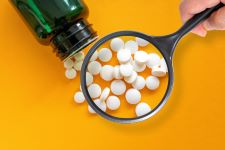Resources
Search >>
Search >>
As the global food industry continues to evolve, understanding and mitigating the risks associated with mycotoxins is more critical than ever. This session will provide a comprehensive overview of mycotoxins, exploring their sources, types, and the severe health and economic impacts they can have. We will discuss advanced detection methods and monitoring strategies that are essential for maintaining food safety standards. Originally Aired on May 6, 2025
In the dietary supplement and ingredient industry, guaranteeing the safety and quality of products is essential. One important part of quality control is the testing for residual solvents—volatile chemicals used during manufacturing that can pose health risks if not adequately removed. Click to read our blog on considerations in testing for residual solvents.
Compendial methods used for detecting sulfur dioxide and sulfites are prone to challenges, including false positives in sulfur-rich matrices. Eurofins Food Chemistry Testing Madison, Inc. offers a solution. Click to read about the innovative LC-MS method for determining sulfur dioxide and sulfites in food products.
Contaminants like ochratoxin A in botanicals and aflatoxins in raw materials pose serious risks to product quality and consumer health. Targeted mycotoxin testing for supplements is critical to meet global compliance standards and protect your brand from costly recalls or regulatory action. Click to learn more.
Pesticide testing is a vital part of maintaining the safety, quality, and regulatory compliance of food products. For QA and food safety managers, understanding the right time to test for pesticides and how to navigate the complex regulatory landscape is crucial for keeping consumers safe and avoiding costly compliance issues. Click to read our guide on pesticide testing to learn more.
Setting Chemical Contaminant Specifications for Dietary Supplements: Navigating the CFR Requirements
Ensuring the safety and quality of dietary supplements is a cornerstone of regulatory compliance. Among the most critical steps in this process is establishing specifications for chemical contaminants. These contaminants, which can arise from raw materials, manufacturing processes, or environmental exposure, must be controlled to meet the standards outlined in the Code of Federal Regulations (CFR). This guide is designed to assist manufacturers in establishing strong chemical contaminant specifications while ensuring regulatory compliance.
Advanced analytical methods play a crucial role in identifying emerging contaminants, unexpected adulterants, food contact material migrants, and other unanticipated chemicals that may compromise regulatory compliance and consumer safety for dietary supplements. Read our white paper to learn about suspect screening and non-target analysis workflows.
Watch this on-demand webinar to gain an understanding of the requirements of CA Bill AB 899, learn how to navigate testing, and hear some answers to commonly asked questions. Original airdate May 30, 2024.
Stay informed on FDA recommendations for florfenicol use in aquaculture medicated feed. Explore our blog for the latest updates.
In this on-demand webinar we'll provide you with the tools and knowledge you need to navigate Amazon's Dietary Supplements Policy. Original airdate April 24, 2024.

















